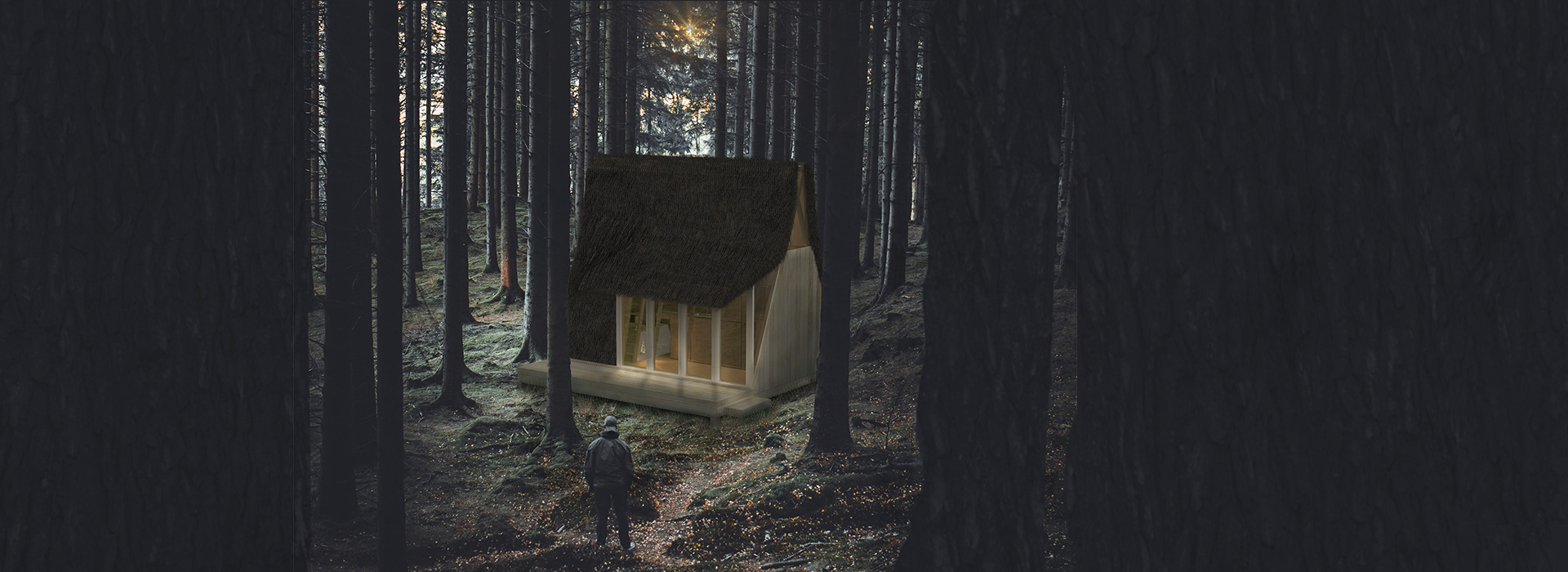
Project Methodology
From early on in our project, our team knew that we wanted to have an iterative and agile approach. Although this way of working is standard practice in digital design, we knew that the spatial design process could also benefit from this methodology. It involved a whole phase (out of three) of design research/programming, a focus on the user experience through storyboarding, continuous rounds of sketching and critique, and rigorously using a kanban board to organise out thoughts and output. As our main project management tool we used trello.

Design Principle 1
Creating an uplifting atmosphere guides the from and function. The meditation area is an important spatial element.
Design Principle 2
The experience is "tech" free and rustic. The hearth is at the core of the space & is designed sustainably.
Design Principle 3
The architecture should create a bridge between between culture (Latvia) and context (the woodlands).
Phase 1 - Programming
In the programming phase we “dissected” the brief, and through direct conversation with the clients, extracted the most important design principles. These were the base for our further work and we referred back to them whenever making an important design decision. We then took a look at conduced research on contemporary meditation spaces and woodland cabins, as well as creating a variety of permutations for a rectangular room of maximally 15m2 to get a feel for what sort of distribution would be possible.


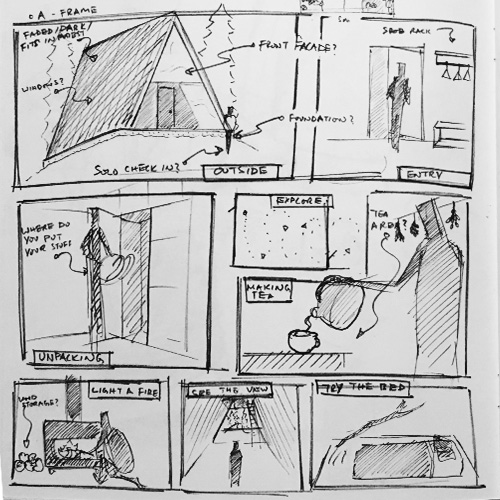
Phase 2 - Conceptual Design
In this phase we started sketching out the formal possibilities. We concluded that a simple A frame would align well with the design principles, as it creates an natural pull of the eye upwards. With the right kind of roof, a highly uplifting experience could be created. Knowing that based on principle 3, we needed to create a minimalist, contemporary design with a Latvian touch, we decided on implementing the vernacular practice of using dry straw as a roof covering.
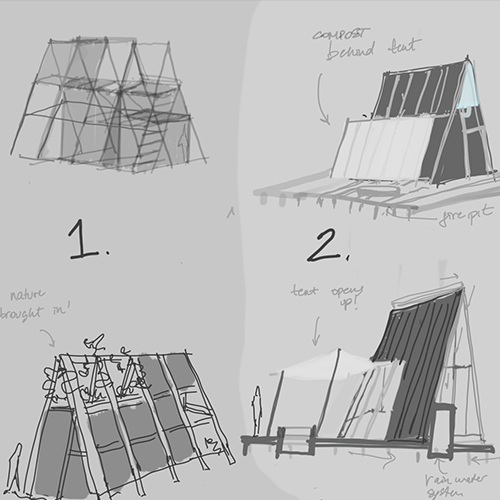


Phase 3 - Construction
Around the same time phase 2 was under way, we started to think about the construction systems, although they were polished further after the key formal design was established. A standard A frame of wooden rafters was chosen, floating on a raised platform of concrete pillars. Nothing too unusual, but the roofing and side windows was where it got interesting. We had a number of constructive permutations of the roof before we settled on the iconic X, as it gave the cabin the “cathedral like” atmosphere it needed.


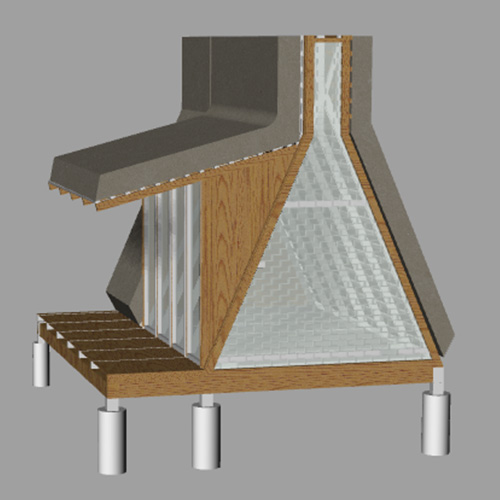
Phase 4- Detalining
The devil is in the details, they say. That’s why we planned a whole phase for getting elements such as the heating outlet, the dry toilet components and meditation area just right. To keep our design in line with principle 2 and make it more sustainable, we included a rocket-mass heating system, which is a fireplace connected with piping to the outside, and surrounded by thick walls of clay. This means that the clay would accumulate heat when the fire was on and radiate it out through the night, making the bed area particularly nice and toasty during the winter time. Perfect!

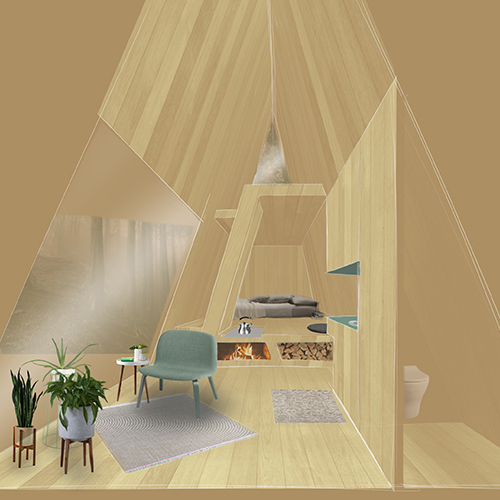

The results
Our focus on the user journey and our top 3 principles from the very beginning naturally lead us to present the cabin in the form of a story with 4 chapters- one on each required poster. The story follows our visitor through a typical day during his retreat where he will arrive, meditate, cook and explore the surroundings.
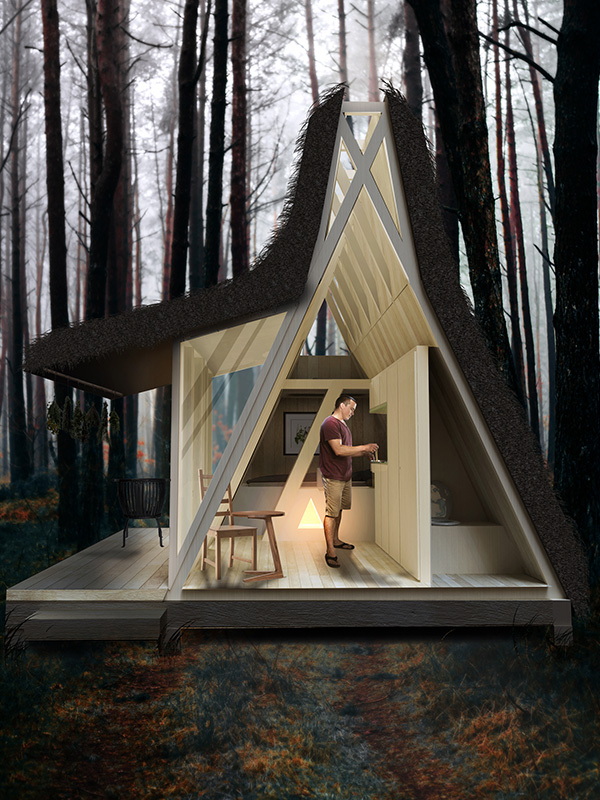

Feel free further explore the posters and the story of the cabin visitor below.
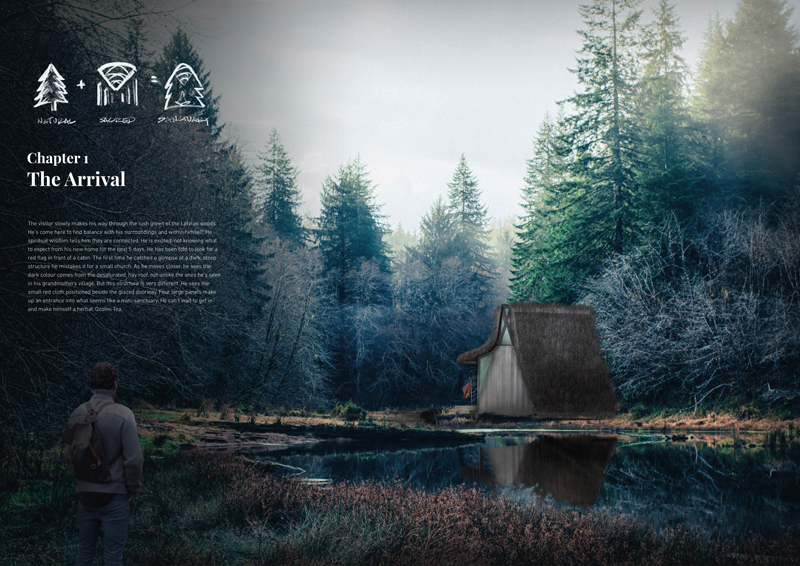
1. The Arrival
The visitor slowly makes his way through the lush green of the Latvian woods. He’s come here to find balance with his surroundings and within himself. He spiritual wisdom tells him they are connected. He is excited, not knowing what to expect from his new home for the next 5 days...

2. Meditation
The visitor has unpacked and sits watching the leaves tussle just outside his cabin. Now it’s time for him to start the ritual which will take up most of his time at the retreat. Before climbing up the steep ladder to the meditation nook, he lights some incense to help him focus...

3. Eating & Thinking
At around 3 the visitor feels hungry. He knows that he cannot focus on cleaning his mind if he first doesn’t satiate his belly. He climbs downstairs to see what he can put together. The cabin has no electricity and therefore nowhere to store veggies and meats...
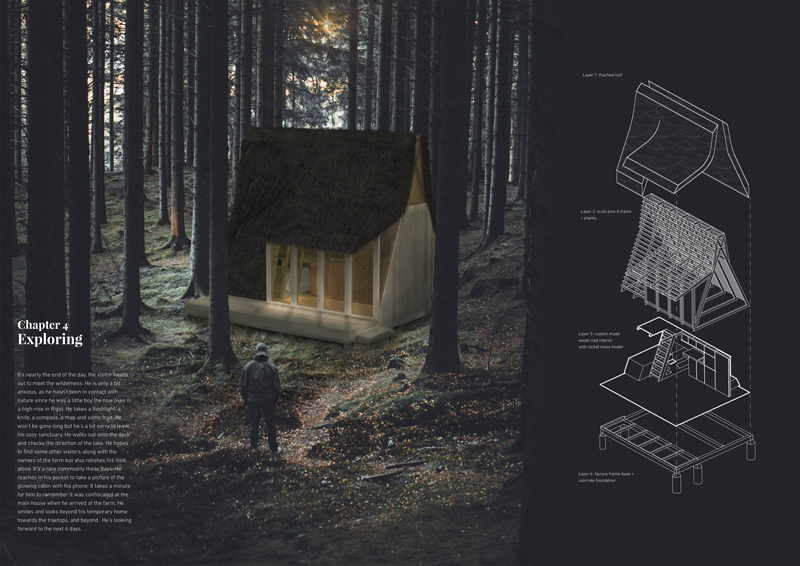
4. Exploring
It’s nearly the end of the day, the visitor heads out to meet the wilderness. He is only a bit anxious, as he hasn’t been in contact with nature since he was a little boy (he now lives in a high-rise in Riga). He takes a flashlight, a knife, a compass, a map and some fruit...